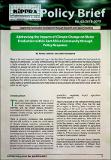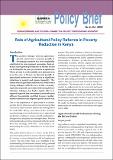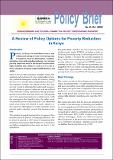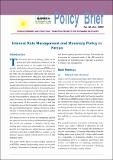Policy Brief No. 62 of 2018-2019 on Addressing the Impacts of Climate Change on Maize Production within East Africa Community through Policy Response
| dc.date.accessioned | 2021-08-04T07:56:30Z | |
| dc.date.available | 2021-08-04T07:56:30Z | |
| dc.date.issued | 2018 | |
| dc.identifier.uri | http://repository.kippra.or.ke/handle/123456789/3072 | |
| dc.description.abstract | Maize is the most important staple food crop in the East Africa Community and define the food security for majority of communities, /is study commissioned by KIPPRA and UNECA demonstrate that maize production is highly vulnerable for climate change and variability with yields expected to decline significantly by 2045. Although on average the yields will be higher compared with the 1971- 2000 baseline, it will likely decline in most agro-climatic zones and affect overall food security situation. Kenya will record 50 per cent reduction in some climatic zones and 43 per cent increase for others, while Burundi and Rwanda will record between 72 -10 per cent increases in maize yields. Climate change is expected to cause a shift in existing agro-climatic zones with area maize growing area becoming less suitable, while growing seasons in some areas will be lengthened thus affecting annual production. Spatial effects of climate change in the region is a wake up for policy makers to combine agricultural and trade polices to boost production and ease flow of cross-border food within the EAC region. | en |
| dc.language.iso | en | en |
| dc.publisher | The Kenya Institute for Public Policy Research and Analysis (KIPPRA) | en |
| dc.relation.ispartofseries | PB/62/ 2018-2019; | |
| dc.subject | Maize production | en |
| dc.subject | Climate change | en |
| dc.subject | Food security | en |
| dc.subject | Agricultural markets | en |
| dc.subject | Agricultural policies | en |
| dc.title | Policy Brief No. 62 of 2018-2019 on Addressing the Impacts of Climate Change on Maize Production within East Africa Community through Policy Response | en |
| dc.type | KIPPRA Publications | en |
| ppr.contributor.author | Laibuni, Nancy & Nyangena, John |
Files in this item
This item appears in the following Collection(s)
-
Policy Briefs [165]




